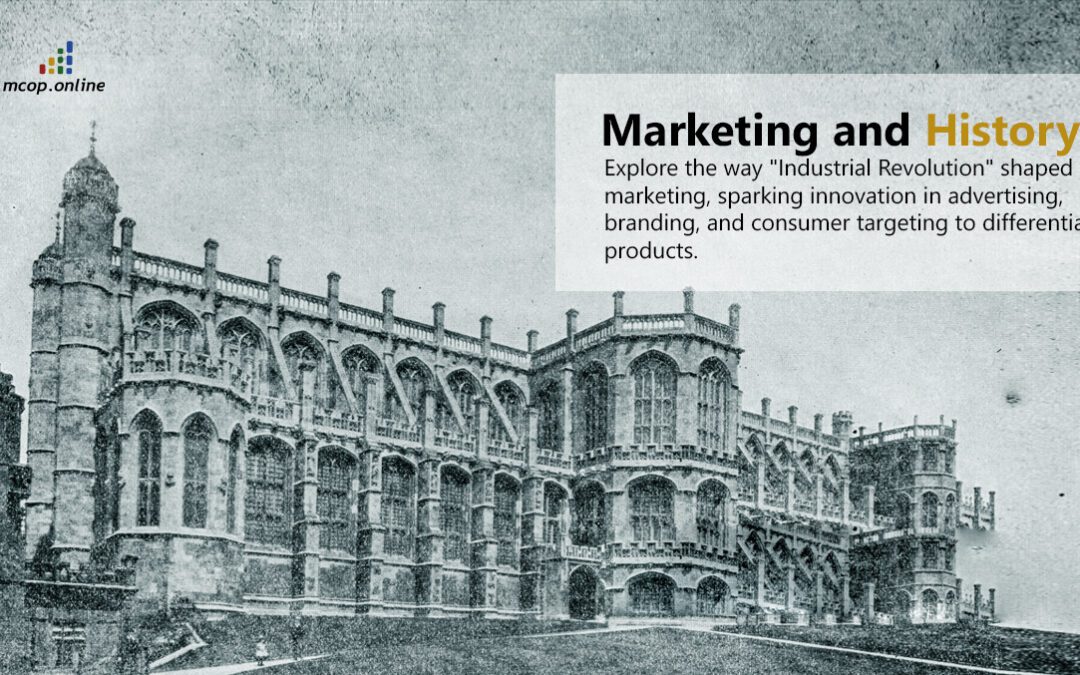As we mentioned in the last blog, we would explore the Industrial Revolution—so here we are!
The Industrial Revolution, spanning the late 18th and 19th centuries, brought about sweeping changes to society, particularly in how goods were produced, distributed, and consumed. This monumental shift in the way industries operated directly impacted marketing, shaping the future of how businesses would interact with consumers. With mass production came new challenges for companies, particularly the need to differentiate their products in an increasingly competitive marketplace. This period marked the beginning of modern marketing as we know it, laying the foundations for advertising, branding, and consumer targeting.
Mass Production and the Need for Differentiation
Before the Industrial Revolution, most goods were produced by hand in small quantities. This limited production meant marketing was simple, often relying on word-of-mouth and personal relationships with customers. However, with mass production, goods were manufactured at scale, lowering costs and increasing availability. While this was a benefit, it created new challenges: how could companies differentiate their products in a market flooded with similar goods?
This shift led businesses to explore new ways of attracting customers, marking the birth of modern marketing. The challenge was no longer just about making goods, but about making them stand out.
The Rise of Advertising
With mass production came the need to create demand. Businesses could no longer rely on local word-of-mouth and had to reach a larger audience. This led to the birth of modern advertising.
Print media like newspapers and magazines became key platforms for businesses to advertise their products. For the first time, companies could reach customers beyond their immediate locality, making it possible to advertise to large groups. Billboards, posters, and event sponsorships also grew in popularity, helping to spread advertising beyond traditional media.
The Birth of Branding
As products became mass-produced, businesses needed ways to distinguish their goods. This led to the development of branding. A brand wasn’t just a name; it was a way to communicate quality, trustworthiness, and uniqueness.
One early example was Procter & Gamble, which used consistent logos, packaging, and slogans. This branding helped build consumer loyalty and trust in the product. Legal protections for trademarks also helped safeguard these brand identities, ensuring that companies could create distinct identities for their products.
Targeting the Consumer
The Industrial Revolution also brought about the idea of consumer segmentation. Instead of marketing to everyone, businesses began targeting specific groups based on their needs and preferences.
For instance, luxury goods were marketed to wealthier consumers through high-end publications, while affordable products were advertised in newspapers targeting the working class. This shift allowed businesses to tailor their marketing, improving effectiveness.
Conclusion
The Industrial Revolution transformed not just manufacturing, but also marketing. With mass production, companies faced the challenge of standing out in a crowded market. This led to the creation of advertising, branding, and consumer targeting. These innovations laid the groundwork for modern marketing strategies and continue to shape how businesses connect with consumers today. The Industrial Revolution didn’t just change the economy; it changed how businesses engage with their audiences.
As we look ahead, we’ll explore how these early shifts in marketing paved the way for the evolution of consumer culture in the 20th century—a topic we’ll discuss in our next blog. Stay tuned!!

